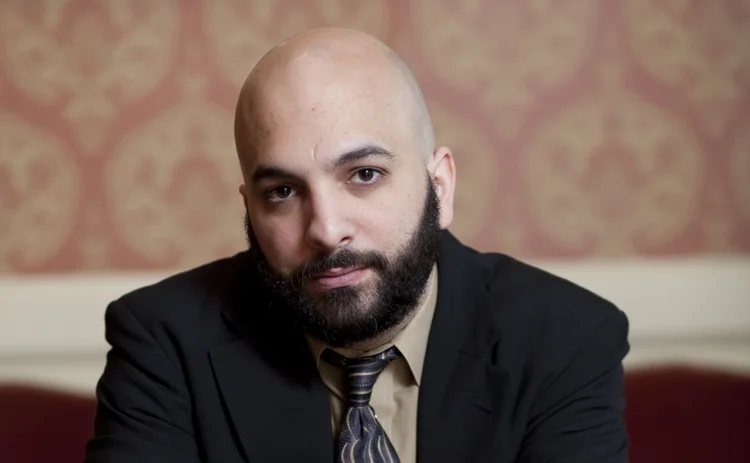Anthony Malakian: Boom Go the Assets

For me, 2011 will be the year of the Baby Boomer—the generation of Americans born in the decade or so after World War II. Boomers born in 1946 turn 65 this year, and that means one thing: retirement.
While many saw their nest eggs shrink during the recent recession, it’s still clear that firms dealing in the retirement space are looking to seize on what could be a booming opportunity, or run from a catastrophic collapse.
In recent months, Vanguard allowed clients nearing retirement to access its Certified Financial Planner, and BlackRock teamed up with SunGard to deliver support for lifetime retirement income within defined contribution plans. Even smaller managers like Intrust Wealth Management have upgraded their retirement offerings.
Baby Boomers’ retirement will begin a period of “de-accumulation” of assets as more money leaves the system than goes in. The name of the game was always building assets, and now the winners will be those who can grab the most post-65 assets. Many institutions will likely just choose to get out of the retirement game altogether, or at least lessen their exposure. That will leave the survivors to carve up the rest of the retirement pie.
This worrisome proposition is uniting industry rivals. In late November, Legg Mason created a Retirement Advisory Council that consists of consultants, law firms, insurance companies, asset managers and financial advisors in order to give a truly holistic view of the retirement market. The aim is to help bring fresh ideas to address the challenges of developing new products, and creating a list of best practices.
“Legg Mason, like a lot of our competition, has a lot of assets tied to the retirement marketplace,” says Legg Mason head of institutions Jeff Mason. “We felt it was important to try and proactively address some of the retirement needs of our clients. We started this advisory council to address what we think is a lapse in understanding, or lack of savings, within retirement. The shortfall of the gap that we anticipate will happen as people retire is something that we are trying to address.”
This begins with transparency and confidence in the system. In our top story this month, BNY Mellon Asset Management CIO Alan Goldstein says the greatest challenge the buy side faces is trying to regain investor confidence.
Retirees, like younger investors, want a better grasp of their retirement portfolios and more transparency. Firms are already being forced down this path thanks to the regulatory environment in the US. Funds are working on how to display this information in a statement, and how they will position their products differently to boost profits.
Mike Vogel, senior vice president of SunGard’s wealth management business, says the vendor has been developing solutions that help dig down into a portfolio report to show what the client’s monthly income benefit is for a 401(k) plan, or how much has been accrued on the income portfolio. Some of that logic has not been built into traditional record-keeping systems.
Mason says his firm is developing products for target-date funds and retirement income products with guaranteed principal protection. And Joe Stensland, senior vice president of product management and marketing at Scivantage, says his firm is developing a product that provides a more holistic retirement program that would support functions including money movement, retirement income management, rebalancing, and a portfolio management program.
As a 30-year-old I have only a rudimentary understanding of my retirement portfolio—how much, I wonder, will my baseball card collection net me?—and what surprises me most is that of the retirement solutions vendors I spoke to, almost all are seeing the most interest from larger asset managers with $150 billion under management or more. I expected the major players to have already addressed these issues, but it’s better late to the party than never—which makes me wonder whether the smaller firms are thinking too much about the present and not enough about the future. Smaller, more nimble funds should be working toward improving their systems today, or else spinning off those units, because soon there won’t be enough of the pie left to make the business worthwhile.
Only users who have a paid subscription or are part of a corporate subscription are able to print or copy content.
To access these options, along with all other subscription benefits, please contact info@waterstechnology.com or view our subscription options here: http://subscriptions.waterstechnology.com/subscribe
You are currently unable to print this content. Please contact info@waterstechnology.com to find out more.
You are currently unable to copy this content. Please contact info@waterstechnology.com to find out more.
Copyright Infopro Digital Limited. All rights reserved.
As outlined in our terms and conditions, https://www.infopro-digital.com/terms-and-conditions/subscriptions/ (point 2.4), printing is limited to a single copy.
If you would like to purchase additional rights please email info@waterstechnology.com
Copyright Infopro Digital Limited. All rights reserved.
You may share this content using our article tools. As outlined in our terms and conditions, https://www.infopro-digital.com/terms-and-conditions/subscriptions/ (clause 2.4), an Authorised User may only make one copy of the materials for their own personal use. You must also comply with the restrictions in clause 2.5.
If you would like to purchase additional rights please email info@waterstechnology.com
More on Trading Tech
M&A activity, syndicated loans, a new tariff tool, and more
The Waters Cooler: LSEG and LeveL Markets partner for new order type, QuantHouse gets sold to Baha Tech, and Fitch Ratings has a new interactive tool in this week’s news roundup.
Nasdaq, AWS offer cloud exchange in a box for regional venues
The companies will leverage the experience gained from their relationship to provide an expanded range of services, including cloud and AI capabilities, to other market operators.
Bank of America reduces, reuses, and recycles tech for markets division
Voice of the CTO: When it comes to the old build, buy, or borrow debate, Ashok Krishnan and his team are increasingly leaning into repurposing tech that is tried and true.
Crypto exchange EDX takes its tech into its own hands
The crypto exchange and clearinghouse, founded in 2022 by industry heavyweights, has built out its technology to meet the needs of the institutional market. In the process, it has learned important lessons about partnering with vendors, building in-house, and, ultimately, control.
FCA sets up shop in US, asset managers collab, M&A heats up, and more
The Waters Cooler: Nasdaq and Bruce ATS partner for overnight market data, Osttra gets sold to KKR, and the SEC takes on DOGE in this week’s news roundup.
EMS vendors address FX options workflow bottlenecks
Volatility is driving more buy-side interest in automating exercises and allocations.
BNP Paribas explores GenAI for securities services business
The bank recently released a new web app for its client portal to modernize its tech stack.
Treasury selloff challenges back-office systems, datafeeds
FIS and Trading Technologies suffered downtime during peak activity.








